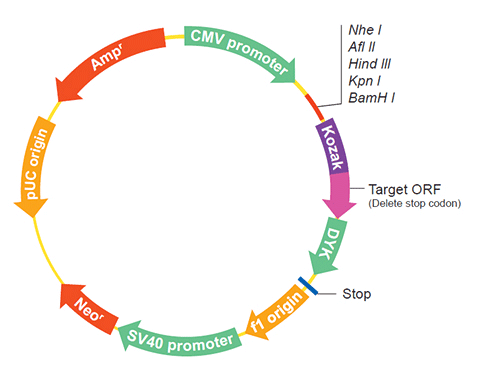| Gene Symbol | AT1G72430 |
| Entrez Gene ID | 843575 |
| Full Name | SAUR-like auxin-responsive protein family |
| Synonyms | SAUR78,SMALL AUXIN UPREGULATED RNA 78,T10D10.10,T10D10_10 |
| Gene Type | protein-coding |
| Organism | Arabidopsis thaliana(thale cress) |
HOME
ORF » Species Summary » Arabidopsis thaliana » AT1G72430 cDNA ORF clone
| Gene Symbol | AT1G72430 |
| Entrez Gene ID | 843575 |
| Full Name | SAUR-like auxin-responsive protein family |
| Synonyms | SAUR78,SMALL AUXIN UPREGULATED RNA 78,T10D10.10,T10D10_10 |
| Gene Type | protein-coding |
| Organism | Arabidopsis thaliana(thale cress) |
| mRNA | Protein | Name |
|---|---|---|
| NM_105902.4 | NP_565042.1 | SAUR-like auxin-responsive protein family |


Sequence and analysis of chromosome 1 of the plant Arabidopsis thaliana.
Theologis A, Ecker JR, Palm CJ, Federspiel NA, Kaul S, White O, Alonso J, Altafi H, Araujo R, Bowman CL, Brooks SY, Buehler E, Chan A, Chao Q, Chen H, Cheuk RF, Chin CW, Chung MK, Conn L, Conway AB, Conway AR, Creasy TH, Dewar K, Dunn P, Etgu P, Feldblyum TV, Feng J, Fong B, Fujii CY, Gill JE, Goldsmith AD, Haas B, Hansen NF, Hughes B, Huizar L, Hunter JL, Jenkins J, Johnson-Hopson C, Khan S, Khaykin E, Kim CJ, Koo HL, Kremenetskaia I, Kurtz DB, Kwan A, Lam B, Langin-Hooper S, Lee A, Lee JM, Lenz CA, Li JH, Li Y, Lin X, Liu SX, Liu ZA, Luros JS, Maiti R, Marziali A, Militscher J, Miranda M, Nguyen M, Nierman WC, Osborne BI, Pai G, Peterson J, Pham PK, Rizzo M, Rooney T, Rowley D, Sakano H, Salzberg SL, Schwartz JR, Shinn P, Southwick AM, Sun H, Tallon LJ, Tambunga G, Toriumi MJ, Town CD, Utterback T, Van Aken S, Vaysberg M, Vysotskaia VS, Walker M, Wu D, Yu G, Fraser CM, Venter JC, Davis RW
Nature408(6814)816-20(2000 Dec)
GeneRIFs: Gene References Into Functions What's a GeneRIF?
SAUR78 (At1g72430) promotes plant growth in Arabidopsis.
Title: Three SAUR proteins SAUR76, SAUR77 and SAUR78 promote plant growth in Arabidopsis.
The following AT1G72430 gene cDNA ORF clone sequences were retrieved from the NCBI Reference Sequence Database (RefSeq). These sequences represent the protein coding region of the AT1G72430 cDNA ORF which is encoded by the open reading frame (ORF) sequence. ORF sequences can be delivered in our standard vector, pcDNA3.1+/C-(K)DYK or the vector of your choice as an expression/transfection-ready ORF clone. Not the clone you want? Click here to find your clone.
| CloneID | OAb27752 | |
| Clone ID Related Accession (Same CDS sequence) | NM_105902.4 | |
| Accession Version | NM_105902.4 Latest version! | Documents for ORF clone product in default vector |
| Sequence Information | ORF Nucleotide Sequence (Length: 360bp) Protein sequence SNP |
|
| Vector | pcDNA3.1-C-(k)DYK or customized vector |  User Manual User Manual |
| Clone information | Clone Map |  MSDS MSDS |
| Tag on pcDNA3.1+/C-(K)DYK | C terminal DYKDDDDK tags | |
| ORF Insert Method | CloneEZ™ Seamless cloning technology | |
| Insert Structure | linear | |
| Update Date | 2019-02-13 | |
| Organism | Arabidopsis thaliana(thale cress) | |
| Product | SAUR-like auxin-responsive protein family | |
| Comment | Comment: REVIEWED REFSEQ: This record has been curated by TAIR and Araport. This record is derived from an annotated genomic sequence (NC_003070). On Sep 12, 2016 this sequence version replaced NM_105902.3. | |
1 | ATGGCCAAAG TTGGGAAGCT GACAAAGCTT AAGTCGGCTA TGAAGAAATG GCCTTCTTTC |
The stop codons will be deleted if pcDNA3.1+/C-(K)DYK vector is selected.
| RefSeq | NP_565042.1 |
| CDS | 298..657 |
| Translation |

Target ORF information:
Target ORF information:
|
 NM_105902.4 NM_105902.4 |

1 | ATGGCCAAAG TTGGGAAGCT GACAAAGCTT AAGTCGGCTA TGAAGAAATG GCCTTCTTTC |
The stop codons will be deleted if pcDNA3.1+/C-(K)DYK vector is selected.
Sequence and analysis of chromosome 1 of the plant Arabidopsis thaliana. |